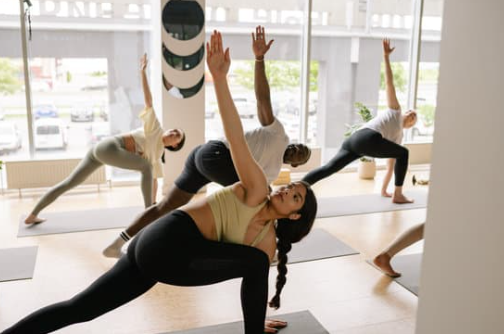Yoga, an ancient practice originating from India, has evolved significantly over time. Today, it stands as a multifaceted discipline offering a plethora of methods tailored to diverse needs and preferences. From traditional Hatha yoga to modern innovations like aerial yoga, the options are abundant, each offering unique benefits to practitioners. Let’s delve into some of the best methods of yoga available today, empowering individuals to choose the practice that resonates most with them.
Hatha Yoga: As one of the foundational forms of yoga, Hatha focuses on physical postures (asanas) and breathing techniques (pranayama). It provides a solid grounding for beginners, emphasizing alignment, balance, and mindfulness. Hatha classes typically move at a slower pace, allowing practitioners to deepen their understanding of each pose and connect with their breath.
Vinyasa Yoga: Vinyasa, often referred to as flow yoga, synchronizes movement with breath, creating a dynamic and fluid practice. It’s characterized by a series of seamless transitions between poses, fostering strength, flexibility, and cardiovascular health. Vinyasa classes vary in intensity, catering to practitioners of all levels, from gentle flow sessions to challenging power flows.
Ashtanga Yoga: Developed by Sri K. Pattabhi Jois, Ashtanga yoga follows a predefined sequence of poses, progressively building strength, flexibility, and focus. It’s a rigorous practice that emphasizes breath, movement, and a meditative state of mind. Ashtanga is well-suited for those seeking a structured and disciplined approach to yoga, with primary, intermediate, and advanced series to accommodate different levels of proficiency.
Iyengar Yoga: Founded by B.K.S. Iyengar, this method emphasizes precision and alignment in each posture. Props such as blocks, straps, and bolsters are commonly used to support students in achieving optimal alignment and depth in their poses. Iyengar yoga is beneficial for individuals recovering from injuries or those with physical limitations, as it allows for gradual progression and customization of the practice.
Kundalini Yoga: Kundalini yoga combines dynamic movements, breathwork, chanting, and meditation to awaken the dormant energy at the base of the spine (kundalini). It aims to balance the chakras, enhance spiritual awareness, and cultivate inner vitality. Kundalini classes often incorporate specific sequences called kriyas, designed to target various aspects of the mind, body, and spirit.
Yin Yoga: In contrast to more dynamic styles, Yin yoga focuses on passive stretching and longer holds (typically 3-5 minutes) to target the deep connective tissues of the body. It promotes relaxation, flexibility, and the release of tension, making it an excellent complement to faster-paced or more strenuous forms of exercise. Yin yoga is particularly beneficial for improving joint mobility and cultivating mindfulness through stillness.
Restorative Yoga: As the name suggests, restorative yoga prioritizes relaxation and rejuvenation, utilizing props to support the body in gentle, restful postures. It encourages deep relaxation of the nervous system, reduces stress, and promotes healing on physical, mental, and emotional levels. Restorative yoga is suitable for individuals of all ages and fitness levels, offering a sanctuary for self-care and introspection.
In conclusion, the best method of yoga is ultimately the one that resonates most with the individual practitioner. Whether you’re drawn to the dynamic flow of Vinyasa, the precise alignment of Iyengar, or the spiritual exploration of Kundalini, there’s a yoga practice suited to your needs and preferences. By exploring different methods and remaining open to new experiences, you can enrich your yoga journey and discover the transformative power of this ancient discipline.

